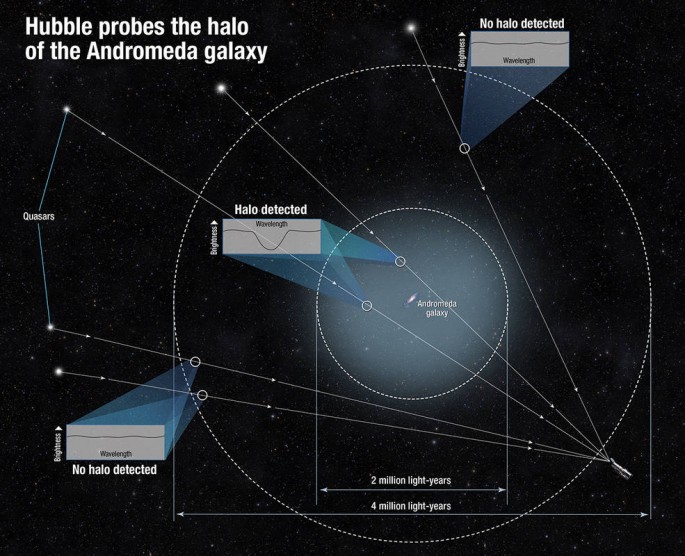Scientists have discovered that the Andromeda galaxy which is the nearest spiral galaxy to our Milky Way, apparently possesses a massive halo of hot gas that expands a million light years.
NASA and ESA's Hubble Space Telescope detected this ghostly feature after looking at some archival data from distant quasars. According to lead author Nicolas Lehner from the University of Notre Dame, halos can be considered as gaseous atmospheres in galaxies where these control the speed rate of star formations in galaxy model formations.
This halo is a pivotal galactic feature as it is estimated to contain about half the mass of all the stars inside the galaxy itself and is also 1,000 times more massive than prior beliefs. These galactic halos were formed about the same time that their host galaxies were in the early stages of development where the team also discovered that Andromeda's halo is also rich in heavy elements.
These heavy elements orginated from intense supernova activity which is when massive stars explode when they run out of fuel, within the galactic disk that are blown by stellar winds further out into intergalactic space towards Andromeda.
Scientists also believe that half of the heavy elements from the supernovae material over the lifespan of Andromeda are also found in this extensive halo.
Not only Andromeda possesses this type of halo but our own Milky Way galaxy also has this halo where both seems to be merging with one another and mixing galactic material. This is due to both galaxies' fate as a collision between both galaxies will transform them into one giant galaxy in about 4 billion years.
Scientists determined the immense mass of Andromeda's halo by studying distant quasars over data that was acquired for over five years from the Hubble. Andromeda's halo atmosphere was mapped out using the dimming properties of the quasar emissions.
According to astronomer J. Christopher Howk of Notre Dame, this quasar light is travelling towards Hubble meaning, the halo's gas absorbs some of that light, making the quasar appear dimmer in a very small wavelength range.
This study is published in The Astrophysical Journal.



























